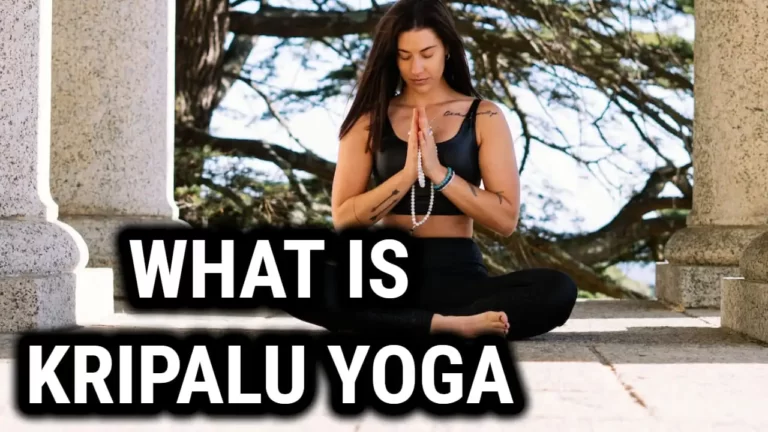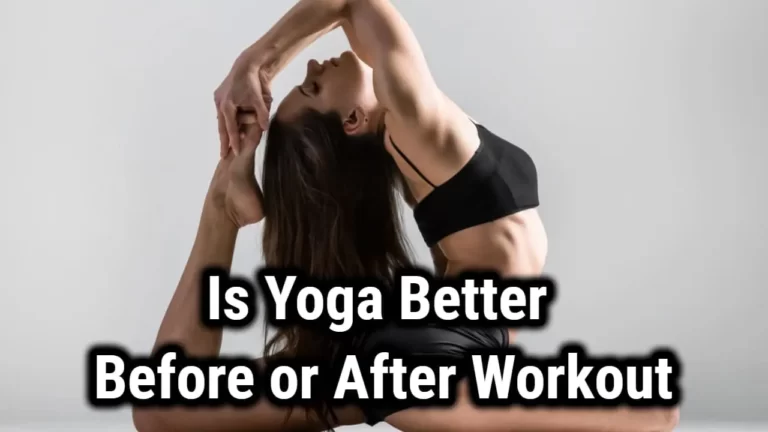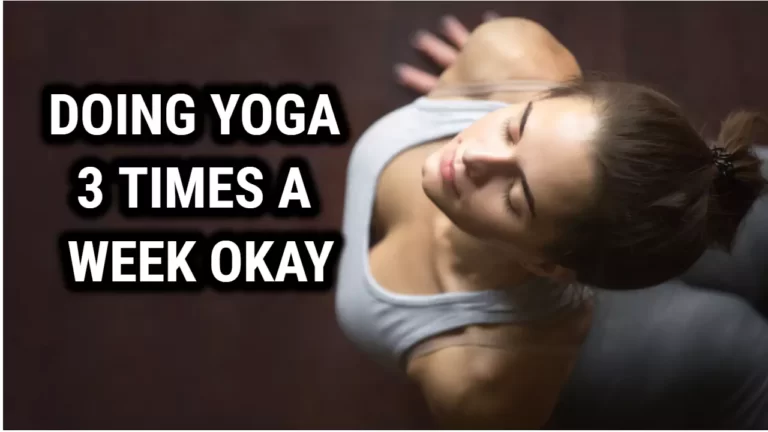What Is Gravity Yoga And How Does It Benefits

Gravity yoga is the perfect way to stretch and strengthen your body, mind and soul. Combining traditional yoga poses with a unique system of props and straps, gravity yoga helps to reduce stress, improve balance and flexibility, as well as increase strength. In this article I’ll explain what gravity yoga is all about, how it works and why it’s so beneficial for your health.
Gravity yoga is an effective form of exercise that helps to relax tight muscles while strengthening the body’s core muscles. It uses a combination of props and straps to create a floating sensation that can help you achieve a deeper stretch than with traditional yoga alone.
The unique system allows you to bring more awareness into each pose by allowing yourself to be supported in different ways.
Whether you’re a beginner or an experienced yogi looking to deepen your practice, gravity yoga may be just what you need! By using the help of props and straps, gravity yoga helps you explore new depths within each pose while providing support for your body.
Through regular practice, you can increase strength, reduce stress levels and improve overall alignment. So if you’re looking for an effective way to move deeper into your practice without having to worry about holding poses for long periods of time or risking injury due to overextending yourself then gravity yoga may be the perfect choice for you!
Benefits Of Gravity Yoga
1. Increases Flexibility: Gravity yoga is designed to strengthen and stretch the body. It uses the force of gravity to bring the body into deeper stretches. This can help to improve flexibility and range of motion in the body.
2. Improves Posture: Gravity yoga can help to improve posture by strengthening the muscles around the spine. This will help to keep the body in alignment, improving posture and reducing back pain. It also helps in increasing flexibility of the groin, hips, inner thighs, knees, ankles and shoulders.
3. Strengthens Core Muscles: Gravity yoga is designed to target the core muscles. It helps to build strength in the abdominal muscles, hamstring, obliques, and lower back. This can help to improve balance and stability in the body.
4. Reduces Stress: Gravity yoga is a great way to reduce stress. It helps to relax the body and mind, allowing stress to melt away. The breathing exercises used in gravity yoga can also help to reduce anxiety and promote relaxation.
5. Improves Balance and Coordination: Gravity yoga helps to improve balance and coordination by strengthening the muscles around the joints. This can help to improve performance in sports and everyday activities.
Gravity yoga is an innovative form of yoga which utilizes the power of gravity to achieve greater flexibility, strength and range of motion. It allows yogis of all levels to experience greater freedom in their practice, and reduce stress on their joints and muscles.
Who Should Practice Gravity Yoga

Gravity yoga is a fantastic practice for anyone looking to experience the benefits of yoga and increase their flexibility. It’s perfect for beginner yogis, as well as experienced practitioners who are looking to expand their range of motion and improve their overall flexibility gains.
Gravity yoga can also be beneficial for those with physical limitations or injuries, as its gentle movements can help you feel more in tune with your body.
The main thing to remember when deciding who should practice gravity yoga is that it’s suitable for all levels. Whether you’re a beginner or an advanced practitioner, a gravity yoga teacher can provide guidance and support to ensure you get the most out of your practice. With this in mind, let’s move on to taking a closer look at the postures and poses in gravity yoga.
Postures And Poses In Gravity Yoga
Gravity Yoga is an effective way to increase your range of motion and gain greater mobility through active flexibility training. It combines traditional yoga postures with the principles of yin yoga, applying gentle traction and resistance to target specific areas in the body. Here are some of the most popular postures and poses used in gravity yoga:
- Supported Forward Fold – This pose helps gently lengthen hip flexors, release tension in the lower back, and open up the chest.
- Wall Splits – Using a wall as support, this posture helps stretch both legs while stabilizing them on the wall.
- Reclined Twist – This pose stretches the spine while engaging the core muscles, helping to improve overall balance and flexibility.
These postures provide an excellent foundation for practicing active flexibility training with gravity yoga. Through resistance-based stretching, you can enhance your mobility and reduce tightness and stiffness throughout your body.
Active Flexibility Training With Gravity Yoga

You can take your flexibility training to the next level. You may be familiar with vinyasa yoga and the stretching that comes with it, but what if you could use gravity as an additional tool to improve your mobility? That’s where gravity yoga comes in.
It’s an active approach to flexibility training that leverages gravity to target areas that are difficult to work on otherwise. It does this by using postures and poses which focus on specific muscles and joint ranges of motion.
With gravity yoga, you don’t just achieve greater flexibility; you also gain more efficient movement patterns for everyday activities. Using gravity-assisted techniques helps you move more freely and easily in a way that will benefit your daily life.
Gravity yoga is designed to help you increase body awareness, strengthen muscle groups, and improve joint mobility so that it becomes easier for you to perform everyday tasks like reaching overhead or squatting down without pain or tightness.
Through regular practice, you can improve posture, balance and coordination while also reducing any chronic pain or tension in the body. The results are well worth the effort – not only will you become stronger and more flexible but you’ll also find yourself feeling better overall as well!
Tips For Beginners Doing Gravity Yoga
Gravity yoga is an exciting and rewarding practice, and it’s important to remember that as a beginner, you can take it slow. Start by familiarizing yourself with the poses, and get comfortable with them before moving on to more advanced moves. As you become more experienced, your body will naturally want to move faster and deeper into the poses.
It’s also beneficial to incorporate core strengthening exercises into your routine in order to increase your range of motion. Connective tissues need time to adjust to gravity yoga, so be sure not stretch beyond what’s comfortable for your body.
As you progress in your practice, you can build up strength and flexibility over time. This will help you create a solid foundation for more advanced moves in gravity yoga.
Advanced Moves In Gravity Yoga

Once you have become comfortable with the basic techniques and principles of gravity yoga, it is time to progress to more advanced moves. When practicing these moves, it is important to pay attention to the body’s signals and work within your limits. This will help prevent any injuries and allow you to maximize the benefits of this unique yoga practice.
Advanced moves can help increase your range of motion, allowing for greater flexibility and mobility. They also help in strengthening the nervous system by increasing its capacity for adaptation, which leads to improved physical performance.
To get the most out of each move, focus on maintaining a relaxed state and use controlled breathing as much as possible. This will enable you to experience deeper levels of relaxation while still having access to muscular strength when needed. With practice and patience, these advanced moves can provide long-term benefits that can greatly enhance your overall quality of life.
Also Read: Twisting Yoga Poses: Benefits, Techniques, and Precautions
Frequently Asked Questions
What Equipment Is Needed For Gravity Yoga?
Gravity yoga is an innovative fitness method that combines traditional yoga poses with the use of a zero-compression inversion sling. This type of yoga is great for those looking for a full body workout and increased flexibility without putting excess strain on the spine. In order to practice gravity yoga, you will need the following items:
- A zero-compression inversion sling
- An adjustable stand or ladder
- Yoga mat
- Yoga blocks (optional)
The inversion sling is essential for practicing gravity yoga as it supports your weight while you are inverted and allows one to control their movements more accurately. The adjustable stand or ladder can be used to change the height at which the inversion sling hangs, allowing users to tailor their session to their own body size.
The use of a yoga mat ensures comfort during your practice and helps protect against any potential injuries. Yoga blocks, although not essential, can help with difficult poses and provide extra support when needed.
Gravity yoga is an accessible workout suitable for all levels of fitness, from beginners to advanced practitioners. It provides a unique balance between relaxation and intensity that makes it stand out from other forms of exercise, giving users an opportunity to challenge their bodies in new ways while also improving overall strength, flexibility, and posture.
Is Gravity Yoga Suitable For All Levels Of Fitness?
Due to its adaptability, gravity yoga is a great option for anyone looking for an effective yet gentle form of exercise that’s suitable for all fitness levels – whether you’re just starting out or already have an established routine.
With its combination of strength training and stretching, it’s perfect for those seeking a full-body workout without putting too much strain on their joints or muscles. As with any other type of exercise regimen, the key is listening to your body and adjusting the intensity level accordingly. So if you’re looking for an enjoyable way to improve your physical well-being – gravity yoga could be just what you need!
What Are The Risks Associated With Gravity Yoga?
Gravity yoga is a low-impact exercise that uses gravity and bodyweight to increase flexibility and strength. However, pregnant women should be aware of potential risks such as injury, dehydration, or overexertion.
To minimize these risks, women should start slowly and gradually increase difficulty as they become more comfortable with each pose and consult with a doctor beforehand. With proper care, women can safely enjoy the benefits of gravity yoga during pregnancy.
Are There Any Medical Conditions That Make Gravity Yoga Unsuitable?
Gravity yoga is generally safe to practice, but those with underlying medical conditions or chronic pain should consult their doctor before attempting it. Certain medical conditions may make it unsuitable, such as high blood pressure, glaucoma, joint instability or muscle weakness due to age or chronic illness should only be attempted under supervision of an experienced instructor with modifications.
Related Read: Gentle Yoga Poses For A Calmer Mind And Body
Conclusion
Gravity yoga is a unique practice that has many potential benefits. It can help improve strength, flexibility, and balance while also providing a great workout. With the right equipment and guidance, gravity yoga can be an enjoyable and rewarding experience for practitioners of all levels of fitness.
With proper guidance and instruction from a qualified instructor, you’ll be ready to enjoy the full benefits of gravity yoga in no time! Plus, with its low-impact movements, it’s suitable for all fitness levels – so why not give it a try? You won’t regret it!





